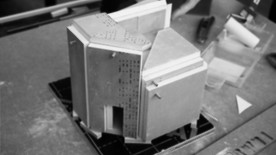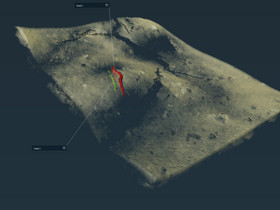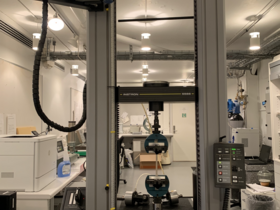
New publication on microcracks in canvas paintings
May 19, 2021, Mikkel Scharff presented the paper ‘Canvas-related microcracks in Danish 19th-century paintings’ online at the ICOM-CC Triennial conference.
The paper by Mikkel Scharff and Cecil K. Andersen from the Royal Danish Academy, and Troels Filtenborg from the National Gallery of Denmark will be published open access in November this year. Until then the abstract can be read here:
“This paper discusses the emergence of microcracks observed in the ground layers of paintings on canvas supports. Such cracks are visible in 50 μm resolution x-radiographs and correlate with the occurrence of microcracks as well as more large-scale crack patterns in the surface of the paintings. They also explain the initiation of one type of crack formation and the subsequent propagation of the crack into the paint layers. An examination of 41 paintings by the Danish artist C.W. Eckersberg, dating from throughout his oeuvre, showed a variable prevalence of microcracks in 24 paintings. Some cracks were visible only in the x-radiographs while others could be observed also on the paint surface. In many cases, it was found that microcracks were incorporated into the larger crack pattern of the paint. The mechanical process underlying the genesis of microcracks is discussed, and a potential association with the stratigraphy of the grounds used in Eckersberg’s paintings is proposed.”
In addition, the authors gave permission to share the primary findings in this blogpost.
X-radiography is a non-destructive technique used for detection of changes in the composition of a painting, hidden paintings underneath the surface, and over-painted areas, but also for examination of tears, holes, and cracks, like in this case.
By using X-radiographs microcracks were revealed in 24 out of 41 examined paintings by C.W. Eckersberg in the study by Mikkel Scharff et al. An example of this can be seen in the figures below, taken from the paper. Figure 1 is a X-radiograph of the painting “A Pergola” by Eckersberg, Italy 1814/16, and figure 2 is the same X-radiograph but processed with a Fourier filter using nip2 software. On figure 1, the weave geometry of the canvas and the cracks are seen, and on figure 2, the microcracks are highlighted in red and orange, which refer to two directions of the cracks.
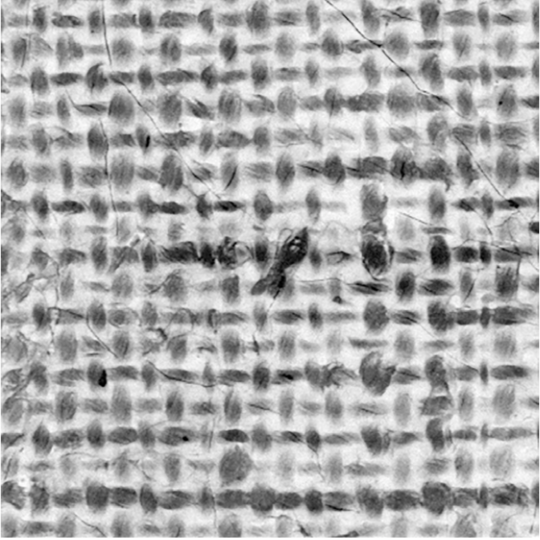
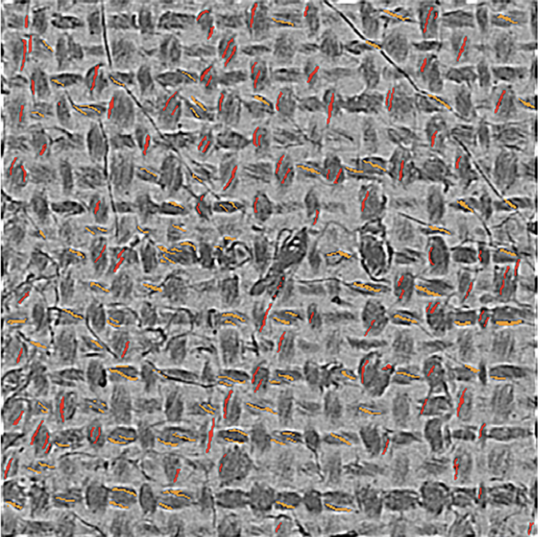
It was found that the two directions of microcracks correspond to the two weave directions in the canvas and follows the twist and spinning degree of the fibers. This is explained in the paper by the fact that flax fibers swell significantly in diameter upon moisture exposure, which can cause local stress to be applied to a ground or paint layer transverse to the individual fibers. The orientation of a crack is usually perpendicular to the orientation of the stresses, which means that if the direction of stress in the ground/paint layer is transverse to the fibers, the cracks may occur along the length of the fibers, as this is perpendicular to the stress. This mechanism of microcracking is illustrated in figure 3 step 1-3, which is a schematic drawing of a cross-section of a canvas thread and the superimposed layers, showing a step-by-step visualization of microcrack creation: (1a) paint, (1b) ground, (1c) thread fibers, (2) moisture absorption causes the fibers to swell, which is resulting in cracking of the ground where it
is thinnest; (3) dried fibers, the crack remains. As illustrated in step 4-5, the microcracks can subsequently propagate from ground layer(s) through superimposed layers: (4) increased forces cause stress in the paint/second ground layer; (5) paint cracks.
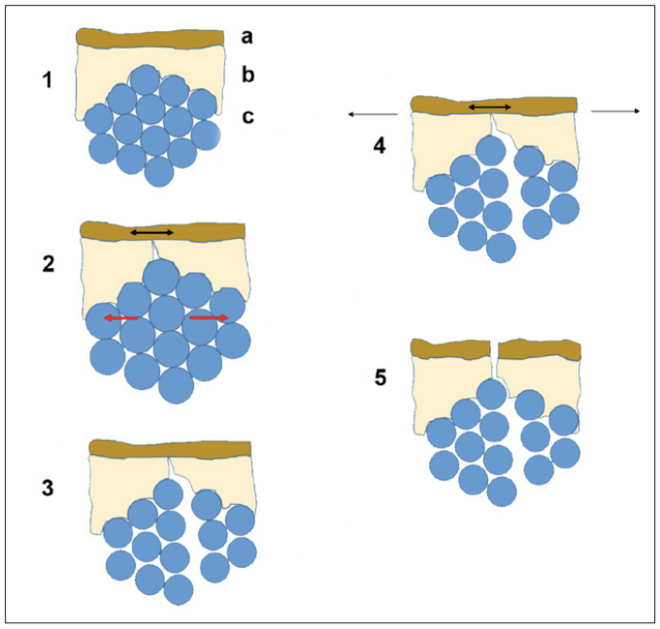
The cracks are positioned where the ground layer is thinnest, typically above the crossover of two threads. This is illustrated in figure 4, which is a schematic drawing of the point of intersection of two threads, at the top of which the ground layer is thinnest and the stress concentration strongest, causing crack formation. The crack thus formed is shown in red.
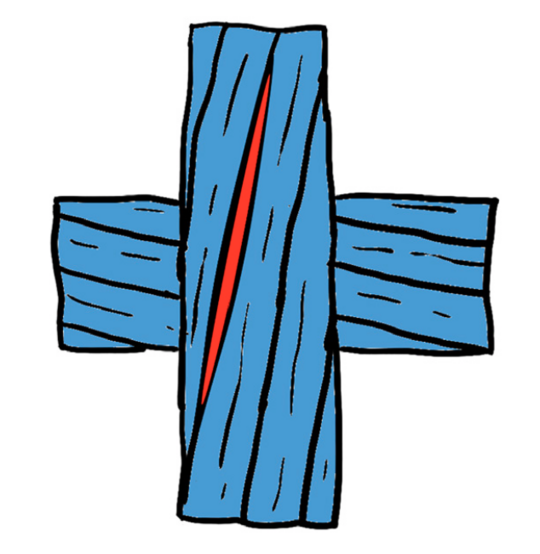
Microcracks in the ground layer of a canvas painting is a potential risk of further degradation if the cracks start to grow into the paint layers. This is very likely if a painting affected by microcracks is exposed to increased tension e.g., due to certain conservation treatments such as keying out or restretching the canvas, or environmental changes. Hence conservation treatments and climate conditions must be carefully considered for paintings exhibiting microcracks.
Scharff, M., C.K. Andersen, and T. Filtenborg. 2021. Canvas-related microcracks in Danish 19th-century paintings. In Transcending Boundaries: Integrated Approaches to Conservation. ICOM-CC 19th Triennial Conference Preprints, Beijing, 17–21 May 2021, ed. J. Bridgland. Paris: International Council of Museums.
The study behind this paper has received funding from the European Union’s Horizon 2020 research and innovation programme under grant agreement No. 814624.















